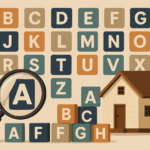Australia's housing shortage has reached critical levels with a deficit of over 200,000, and the gap between supply and demand in the housing market is only widening.
A recent analysis by independent economist Tarric Brooker sheds light on just how severe the problem has become.
On X (formerly Twitter), Brooker provides a realistic picture of Australia's housing deficit, offering a dual analysis scenario.
To quantify Australia’s housing shortage, Brooker uses two scenarios to estimate the extent of the housing deficit from June 2019 to the present:

1. Ideal world scenario:
This scenario operates on highly optimistic assumptions:
- None of the newly completed dwellings over the past five years were knockdown rebuilds or redevelopments, despite industry estimates suggesting that typically 10-15% of all new homes fall into this category.
- There are no newly completed homes sitting vacant, even though the average vacancy rate for new builds generally ranges between 5% to 10%.
- Short-term rental properties, holiday homes, and Airbnbs are excluded from consideration, assuming that every dwelling is available for long-term residential use.
- Australia’s housing market was in perfect equilibrium as of June 2019, meaning there were just enough homes for the population at that point.
Under this ideal scenario, the housing deficit would have grown by 98,000 dwellings since mid-2019.
2. A more realistic scenario:
Here, Brooker takes a more grounded approach with practical assumptions:
- Assumes that 10% of newly built homes are knockdown rebuilds, which means they replace existing stock rather than adding new supply.
- Assumes that 5% of newly completed homes remain vacant, either due to market factors or investor decisions.
- This accounts for the fact that a significant portion of the housing stock is used for non-residential purposes, like holiday rentals.
In this more realistic scenario, the estimated shortfall balloons significantly, with Australia now facing a deficit of 232,000 homes over the past five years.

Brooker’s findings align with other economists’ estimates of our housing shortage.
In other words, we need to build more than 200,000 new dwellings to bring the supply and demand ratio to a near-equilibrium state before providing accommodation for the more than 300,000 new people that we’re adding to our population each year.
Final thoughts
The numbers don’t lie – Australia is on a collision course with a severe housing shortage, driven by policy misalignments and market pressures.
The question remains: will the government act in time to avert this crisis, or will the housing shortage become an even bigger burden for Australians in the years to come?














